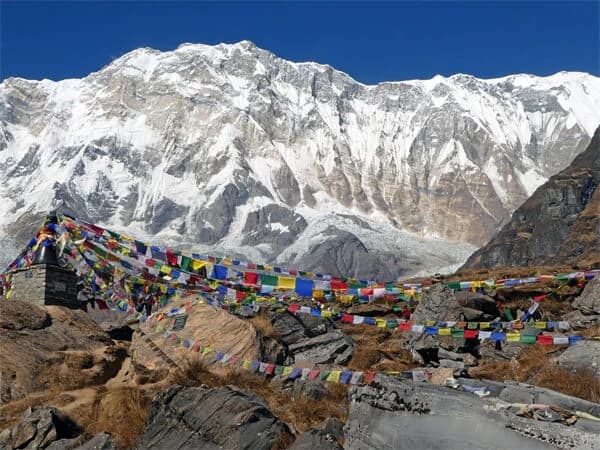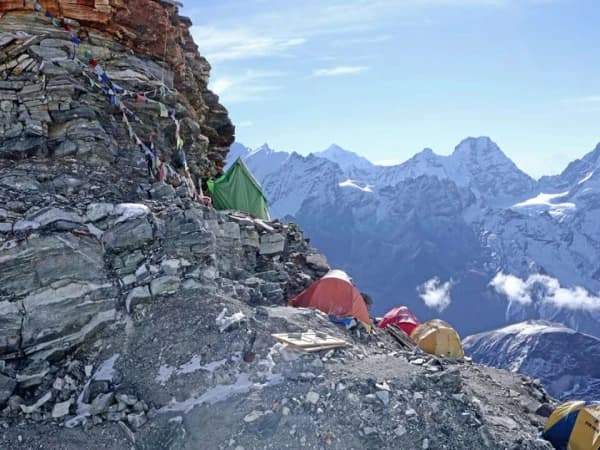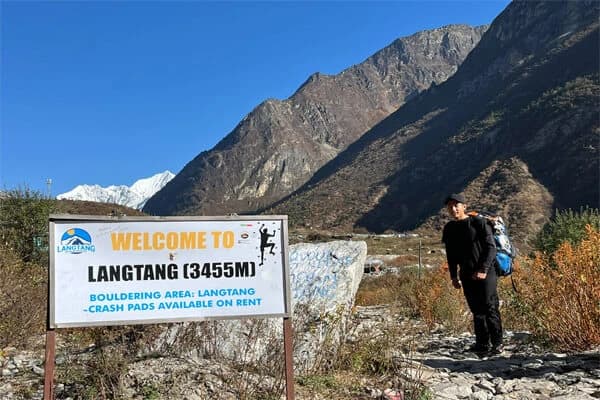Why visit Nepal? When travelers imagine adventure, culture, and scenic beauty all in one location, this question comes to mind. More than just a country of high mountains, Nepal is a place where the Himalayas converge with thriving towns, revered temples, and age-old customs. Watching the sunrise over Mount Everest, explore Kathmandu's centuries-old streets, or hearing monks chant in isolated monasteries everywhere offers something different.
Nepal appeals to both adventurous and reflective travelers with its heart-pounding treks and tranquil nature tours. Its varied scenery, which include glacial rivers, arid high-altitude deserts, and lush green valleys and forests, provide countless photographic opportunities. However, Nepal is more than just vistas; it is also about experiences, including dining with local families, taking part in vibrant celebrations, and learning about the kindness and tenacity of its people.
Nepal stands out as a place that easily combines adventure, culture, and spirituality for anyone making a bucket list of places to visit. This blog helps tourists plan a trip that genuinely connects them with the heart of the Himalayas by spotlighting Nepal's stunning landscapes, rich heritage, and life-changing experiences.
The Majestic Himalayas for Visit Nepal
The Himalayas are the focal point of Nepal's well-known title as the "Roof of the World." Understanding the majesty of these mountains is crucial for anyone organizing a trip, which is why this section of a Nepal travel guide is a must-read for anyone hoping to visit Nepal.
Famous Peaks That define Nepal
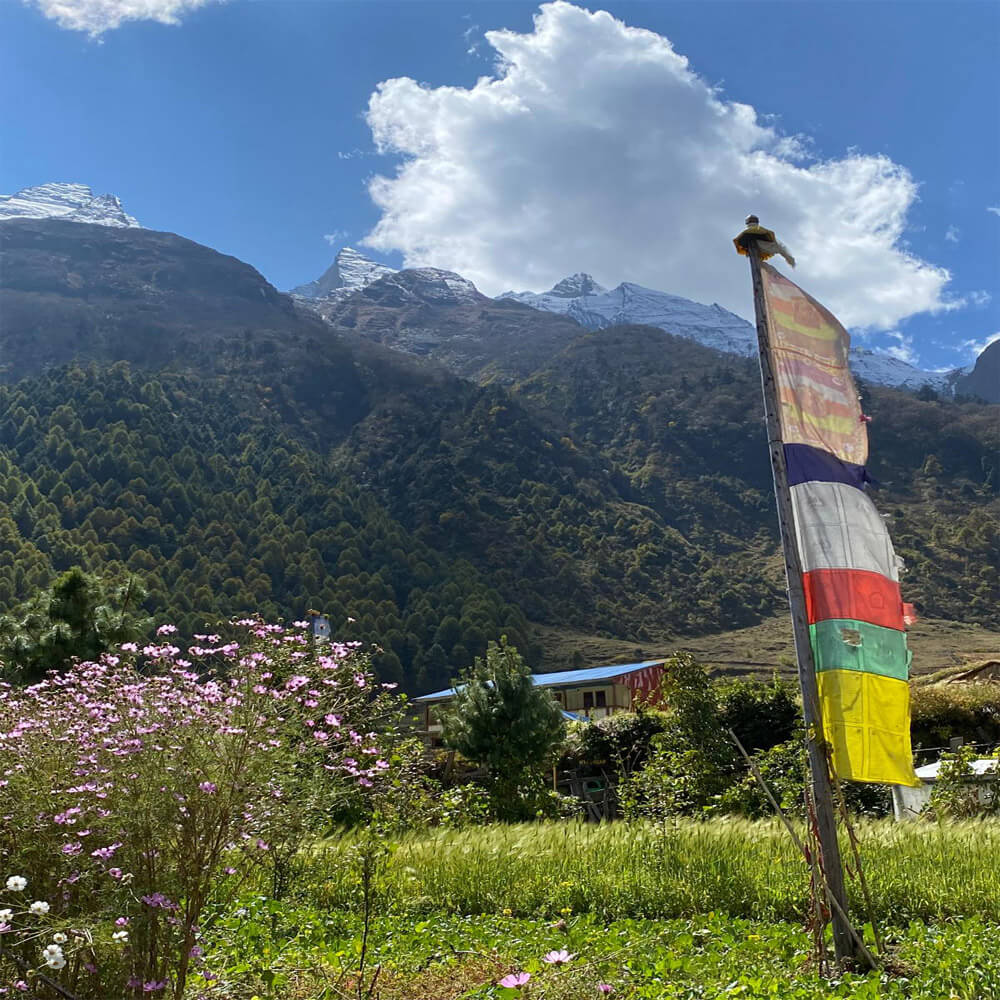
Eight of the fourteen highest peaks in the world, including the fabled Mount Everest (8,848m), are located in Nepal. Other well-known peaks that dominate the skyline with stunning splendor are Makalu, Lhotse, and Kanchenjunga. Despite being somewhat lower, the Annapurna range provides breathtaking views of tranquil lakes, deep valleys, and snow-capped summits. Local communities and climbers around the world hold these mountains in high regard as cultural icons in addition to being natural wonders.
Trekking Routes for Every Adventurer
Trekkers of all kinds can find something to enjoy in Nepal's Himalayas. For first-time high-altitude hikers looking for iconic scenery and Sherpa culture, the Everest Base Camp Trek is ideal. The Annapurna Circuit Trek offers a variety of scenery, including high mountains like Thorong La, alpine meadows, and subtropical woods. Treks like the Manaslu Circuit and Upper Dolpo provide untamed scenery, historic towns, and rough terrain for people looking for isolated and difficult experiences. Trekking here is a full experience since each route blends cultural immersion with physical effort.
Panoramic View Points and Sunrise Spots
The expansive views are among the most delightful aspects of trekking in the Himalayas. Well-known vantage locations that offer breathtaking sunrises over snow-capped peaks include Sarangkot near Pokhara, Poon Hill in the Annapurna region, and Gokyo Ri in the Everest region trek. These times are ideal for taking pictures, practicing meditation, or just taking in the grandeur and tranquility of the mountains. Every traveler will be enthralled by the views of the majestic Himalayan peaks that can be seen on even short hikes in Kathmandu or Pokhara.
Cultural Landscapes Amidst Mountains
Mani walls and prayer flags line the trails, monasteries cling to cliff faces, and settlements dot the valleys the Himalayas are more than simply mountains and snow. Trekking through these areas gives visitors the chance to see centuries-old architecture, traditional farming methods, and Tibetan-influenced culture. Festivals, customs, and the warmth of the locals provide the natural beauty a human touch while balancing adventure with culture.
Adventure Beyond Trekking
In addition to trekking, the Himalayas include alpine animal safaris, Peak climbing in Nepal,mountain biking, and paragliding in Nepal. The mountains offer an exciting yet introspective experience, whether you are standing at the foot of the highest peak in the world or discovering secret valleys. A thorough Nepal travel guide will demonstrate to anyone planning a trip that these peaks are not only a challenge but also a source of adventure, inspiration, and spiritual understanding, making Visit Nepal a trip to remember.
Rich Cultural Heritage
Nepal is a living museum of culture, tradition, and history that is more than just mountains. Its rich cultural heritage is mixed with everyday life, religious rituals, festivals, and architectural design, providing visitors with a rich and vibrant experience. You can travel back in time and observe a community that has maintained its individuality for generations by learning about Nepal's cultural history.
UNESCO World Heritage Sites
There are numerous UNESCO World Heritage Sites in Nepal, each of which tells a distinct tale of the nation's past. The center of the capital's historic district is Kathmandu Durbar Square, which is home to palaces, temples, and courtyards that showcase Newar architectural design. While Bhaktapur Durbar Square transports guests to a living medieval city with customary woodworking, pottery, and festivals, Patan Durbar Square is nearby and features magnificent stone sculptures and centuries-old monasteries. These locations are hubs of community life where history and modern life coexist harmoniously; they are more than just tourist destinations.
Festivals and Local Traditions
Nepal's festivals are colorful, religious, and ingrained in the indigenous way of life. The longest celebration, Dashain, honors the victory of good over evil with ceremonies and family get-togethers. The festival of lights, Tihar, celebrates family ties, animals, and gods. Communities come together to celebrate Holi, the festival of colors, with enthusiasm. Smaller, less well-known festivals in tourist-restricted areas like Upper Mustang or Upper Dolpo provide visitors a unique look into Himalayan culture and traditions.
Religious and Spiritual Heritage
Coexisting Buddhism and Hinduism have influenced Nepal's cultural identity. Visits to Swayambhunath Stupa (Monkey Temple), Boudhanath Stupa, and Pashupatinath Temple demonstrate centuries of devotion. Ancient rites are carefully performed, prayer flags fly over mountain ridges, and monks chant in monasteries. In these hallowed places, visitors can politely engage in spiritual activities, go to local prayers, or just take in the peace and quiet of everyday life.
Traditional Arts and Crafts
The arts, crafts, and local livelihoods are the main sources of Nepalese culture. Using traditional techniques, people continue to engage in weaving, ceramics, wood carving, and thangka painting. Workshops in places like Bhaktapur and Patan let visitors watch craftspeople at action, purchase genuine trinkets, and even try their hand at making local crafts.
To put it briefly, Nepal's rich cultural legacy is something to experience rather than only observe. Each festival, temple, and handicraft factory narrates a tale of beauty, tenacity, and commitment. Participating in these customs gives visitors a stronger sense of national identity and makes their trip more memorable and culturally immersing.
Adventure and Outdoor Activities in Nepal
Nepal is an adventurer's paradise in addition to being a land of majestic mountains and historic temples. From novices seeking mild adventure to seasoned tourists seeking intense experiences, the range of outdoor activities offered appeals to all types of thrill-seekers.
High-Altitude Trekking
In Nepal, trekking is legendary. Treks like as the Annapurna Circuit,Langtang Valley, and Everest Base Camp Trek offer breathtaking scenery, isolated communities, and opportunities to see distinctive Himalayan cultures. Trekkers can select routes according to factors like difficulty, length, and landscape. Trekking at high altitudes tests your endurance while rewarding you with expansive vistas of the mountains, snow-capped summits, and gorgeous lakes. For novices and families, even short treks close to Kathmandu, such as Chisapani or Nagarkot, offer breathtaking views.
Mountaineering and Peak Climbing
Nepal provides mountaineering chances on summits such as Island Peak, Mera Peak, andLobuche Peak for those looking for severe adventure. With expert assistance, climbers can push themselves on difficult routes or reach high summits. Standing atop magnificent Himalayan summits with unmatched views is the prize for these treks, which demand meticulous planning, fitness, and acclimatization.
White-Water Rafting and Kayaking
The glacial melt that feeds Nepal's rivers makes them ideal for exhilarating water sports. While the Bhote Koshi provides expert rafters heart-pounding rapids, the Trishuli River is best for novices and family-friendly rafting. Popular activities that combine adventure with picturesque river valleys are kayaking and canoeing. Travelers may experience Nepal from a whole new angle with these water-based activities.
Paragliding and Aerial Adventures
Nepal's paragliding hub is Pokhara, which boasts tranquil lakes and expansive valleys. It is a once-in-a-lifetime experience to fly over Phewa Lake with the Annapurna mountain in the background. To add a bird's-eye perspective to their Himalayan experience, adventurers can also try zip-lining, ultralight flights, and hot-air balloon rides.
Wildlife Safaris and Nature Exploration
Nepal has a wide variety of animals, and guided jungle safaris are available in national parks like Bardia and Chitwan. Elephants, Bengal tigers, one-horned rhinos, and unusual bird species are all visible to visitors. Jeep tours, canoe cruises, and guided walking paths are examples of safari activities. These trips blend learning about Nepal's distinctive ecosystems and conservation initiatives with adventure.
In Nepal, adventure is about experiencing environment, culture, and life in its most raw state; it is not simply about having fun. Nepal is a must-visit location for all travelers because of its outdoor activities, which include trekking through distant valleys, rafting down untamed rivers, and flying over serene lakes.
Unique Flora and Fauna of Nepal
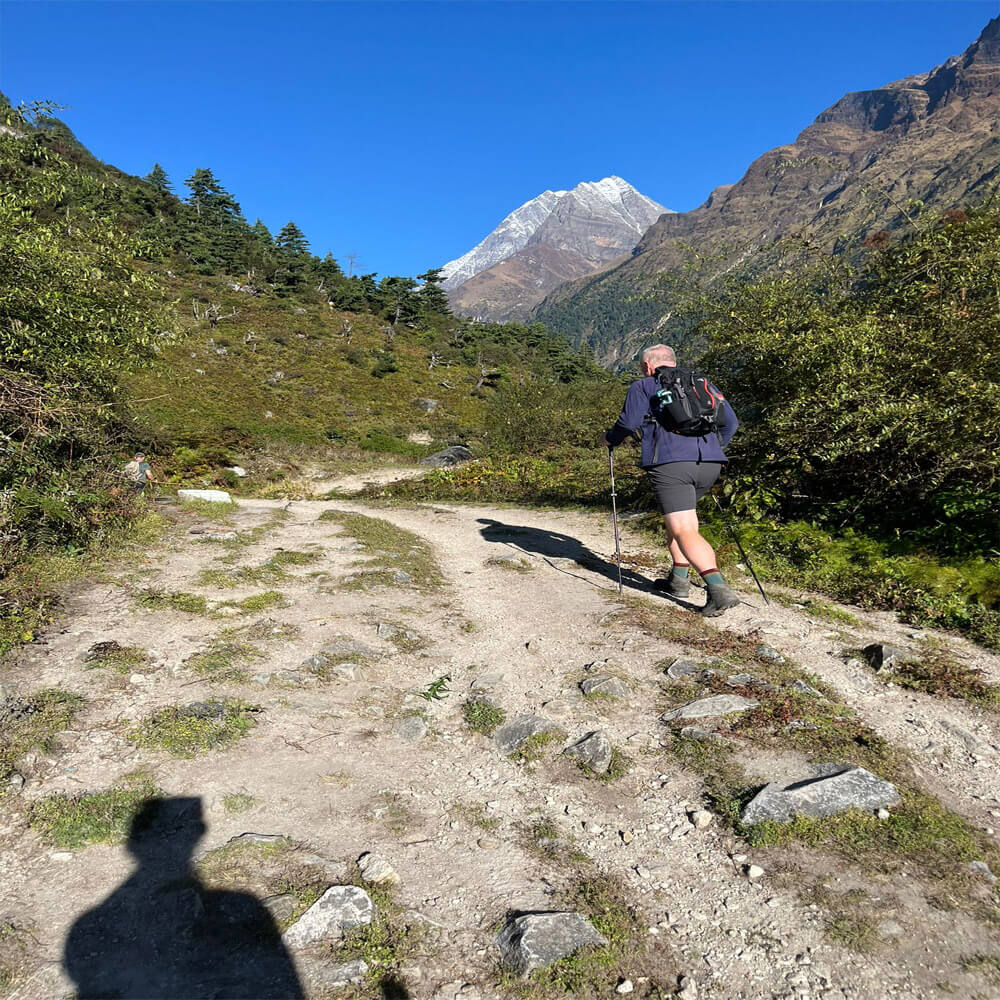
Nepal is a sanctuary for biodiversity, providing hikers and tourists with the opportunity to see uncommon creatures and distinctive ecosystems. It is not just about majestic mountains and tranquil monasteries. From subtropical lowlands to alpine heights, the nation's many temperature zones provide home to an incredible array of flora and fauna.
National Parks and Wildlife Reserves
There are over 20 national parks and protected regions in Nepal, and each one is home to a variety of animals. Perhaps the most well-known is Chitwan National Park, where visitors can see Bengal tigers, one-horned rhinoceroses, and a variety of birds. Less crowded than Chitwan, Bardia National Park offers an opportunity to witness wild elephants, leopards, and swamp deer in their native environments. Sagarmatha National Park, which encircles Everest in the north, is home to Himalayan tahr, snow leopards, and the elusive red panda. These parks safeguard delicate ecosystems that support the Himalayan environment in addition to serving as wildlife sanctuaries.
Rare and Endangered Species
Because of its distinct topography, Nepal is home to species that are unique to the planet. For instance, the eastern Himalayan forests' mild climate is ideal for the red panda. Locals hold snow leopards, known as the "ghost of the mountains," in the highest regard despite their rarity. Hundreds of species are available to birdwatchers, such as Nepal's national bird, the Himalayan monal, which has iridescent feathers that glow in the sun. Trekking through these areas allows visitors to see some of nature's most amazing masterpieces up close.
Flora: From Subtropical to Alpine
Nepal's plant life is equally remarkable. Lush rhododendron woods abound in lower valleys, and their stunning spring blooms adorn the hillsides in shades of pink, white, and crimson. At higher elevations, you can find moss-covered rocks, alpine meadows, and resilient flora that can withstand severe weather. Ancient trees, wildflowers, and medicinal herbs contribute to the abundance, assisting both regional cultures and conventional medical procedures.
Eco-Tourism and Conservation
Nepal promotes ethical wildlife travel. Community-based resorts, conservation initiatives, and guided tours in national parks all contribute to environmental preservation while providing visitors with genuine experiences. In addition to the amazing landscape, trekking through these places instills a sense of duty because every action you do in nature contributes to its preservation.
More than merely a setting for trekking excursions, Nepal's flora and fauna are an essential component of its allure. Discovering Nepal's biodiversity enables visitors to form a close bond with the Himalayas and recognize the fragile balance of life in this remarkable area, from unique wildlife encounters to colorful forests and alpine meadows.
Spiritual and Wellness Tourism in Nepal
Nepal is a haven for tourists wishing to take care of their mind, body, and spirit in addition to being a place for adventurers seeking high peaks and rough paths. Here, spiritual and wellness tourism offers a distinctive experience that goes beyond sightseeing by fusing tranquil Himalayan scenery with age-old customs.
Meditation and Yoga Retreats
The serene valleys of Nepal and the foothills of the Himalayas make the ideal setting for yoga and meditation. Programs are available for all skill levels in retreat places close to Pokhara, Kathmandu, and the Annapurna region. Numerous retreats combine contemporary health practices with ancient Himalayan methods to assist guests develop mindfulness, increase flexibility, and lessen stress. Imagine meditating by the tranquil Phewa Lake or doing yoga at daybreak while taking in expansive vistas of Machhapuchhre (Fishtail Mountain) both activities revitalize the body and the mind.
Monasteries and Spiritual Journeys
Buddhism and Hinduism have a strong spiritual connection in Nepal. Travelers can observe ceremonies, recite prayers, and take part in meditation sessions with monks at remote monasteries including those in Tsum Valley, Lumbini, and Upper Mustang. Through pilgrimages to revered locations such as Pashupatinath Temple, Swayambhunath Stupa (Monkey Temple), and Muktinath, tourists can engage with centuries-old customs and gain a personal understanding of the indigenous way of life. These trips frequently involve soul-enriching cultural storytelling, learning sessions, and led spiritual walks.
Wellness Through Nature Immersion
Himalayan lakes, forest paths, and high-altitude hikes are also natural wellness treatments. There are established ways to relax the nervous system, such as taking a walk through rhododendron forests, taking in the fresh mountain air, and experiencing the sound of running rivers. To further improve physical health, eco-lodges and homestays frequently include organic meals made with local produce. Wellness tourism in Nepal stresses harmony between humans and nature, urging travelers to slow down, observe, and connect with their surroundings.
Traditional Healing and Local Therapies
Numerous health clinics integrate Himalayan therapeutic techniques, herbal remedies, and Ayurvedic treatments. Meditation practices, massages using locally obtained oils, and herbal baths all encourage relaxation and detoxification. Some programs offer a comprehensive strategy that strikes a balance between adventure and both physical and mental well-being by combining trekking with wellness.
Why Nepal Stands Out in Spiritual and Wellness Tourism
Nepal is unique in that its natural beauty and spiritual practices blend together harmoniously. Beyond just memories, travelers return with a revitalized feeling of purpose, inner tranquility, and mindfulness. Nepal's mountains, rivers, and monasteries provide an atmosphere where wellness becomes an immersive and transforming experience, whether you are going for a quick meditation retreat or a multi-day spiritual trip.
Travelers may reconnect with themselves, escape the bustle of contemporary life, and leave the Himalayas with a sense of clarity and serenity by engaging in spiritual and wellness tourism in Nepal.
Local Cuisine and Authentic Experiences
The cuisine, culture, and traditional way of life of Nepal are among the most unforgettable aspects of the country. Beyond the mountains and monasteries, Nepal provides a diverse range of cuisines, handicrafts, and daily life that adds authenticity to every trip.
Traditional Nepalese Cuisine
The cuisine of Nepal reflects the country's varied topography and cultural traditions. The main dish, Dal Bhat, which consists of rice, lentil soup, veggies, and pickles, provides energy and food for hiking or exploring. Momo is another well-liked food. It is a kind of steamed or fried dumpling that is filled with veggies or meat and frequently served with hot sauces. You might come across sel roti, a handcrafted rice flour doughnut, or gundruk, or fermented leafy greens, in rural areas, highlighting regional culinary customs. In addition to satisfying hunger, dining locally introduces visitors to centuries of Nepali culture.
Village Homestays and Community Tourism
Staying in village homestays is essential if you want to experience real Nepal. By assisting with housework, teaching local cooking techniques, or participating in community festivities, these accommodations provide an insight into everyday living. Travelers can engage closely with locals through homestays in places like Ghalegaun, Tsum Valley, or Upper Mustang, learning about customs, rituals, and the cadence of rural Himalayan life. Additionally, a lot of homestays provide cultural performances like traditional dance, weaving, or pottery.
Traditional Crafts and Artisans
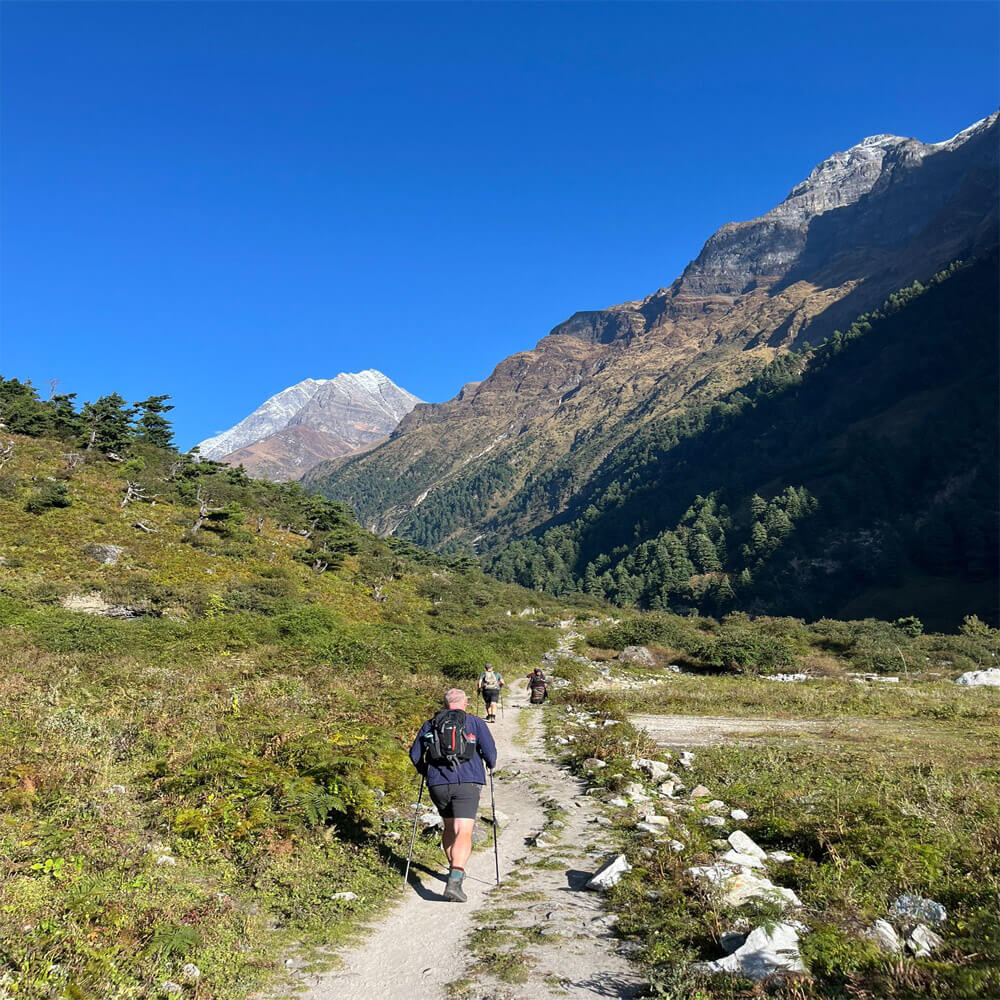
Villages in Nepal are home to talented craftspeople who have been preserving traditional skills for many generations. Visitors can observe artisans producing handcrafted metalwork, wood carvings, thangka paintings, and pottery in locations like Patan and Bhaktapur. Attending workshops or making direct purchases from craftspeople boosts local businesses while giving tourists one-of-a-kind mementos. Additionally, the elaborate craftsmanship provides an insight into the communities' spiritual beliefs and cultural identities.
Festivals and Celebrations
Festivals and food and crafts frequently collide, enhancing the experience with additional layers of brightness. Special meals, customs, and social events are all part of Tihar, Dashain, Holi, and other regional holidays. Attending a festival gives you the chance to sample traditional foods made solely during certain occasions, like desserts, rice specialties, and fermented beverages. Additionally, festivals give visitors the chance to see traditional dance, music, and storytelling, resulting in a completely immersive cultural experience.
Responsible Cultural Engagement
Mindfulness and respect are necessary for authentic encounters. Learn a few local words, ask before taking pictures, and pay attention to the traditions surrounding food and religious locations. The sustainability of these communities is enhanced by patronizing regional companies and craftspeople, guaranteeing that customary ways of life and cooking will endure for upcoming generations.
To sum up, discovering Nepal's regional food and customs is just as enlightening as climbing its mountains. These activities, which range from enjoying traditional meals to participating in festivals, learning crafts, and living at homestays, leave enduring memories. They give visitors a connection to Nepal's people, customs, and heart that is not possible through typical tourist routes, enabling them to do more than just view the country they enable them to live it.
Affordability and Accessibility
One of the rare places where affordable vacation and amazing adventure can coexist is Nepal. From hiking in the Himalayas to touring historic sites, tourists may have top-notch experiences without breaking the bank. However, accessibility is just as important in making Nepal a top travel destination as affordability.
Affordable Travel Options
Nepal provides a variety of affordable lodging options, ranging from basic tea houses along hiking routes to mid-range hotels in Pokhara and Kathmandu. In well-known trekking destinations like Everest Base Camp, the Annapurna Circuit, and the Langtang Valley, tea houses offer cozy accommodations and affordable meals. Local lodges uphold minimum standards even in isolated restricted locations, enabling hikers to enjoy the mountains without going over budget.
Food is also reasonably priced. Delicious and reasonably priced local fare includes dal bhat, momos, and freshly prepared tea or coffee. In places like Kathmandu, Pokhara, and Bhaktapur, street food vendors and small family-run eateries make it simple to savor local cuisine at a fraction of the price of food from other countries.
Flexible Trekking Packages
The hiking sector in Nepal accommodates a broad spectrum of spending levels. From low-cost treks with minimal amenities to luxurious treks with private guides and helicopter support, authorized trekking organizations, such as Nepal Trekking Routes, provide individualized packages. Travelers may create itineraries that suit their budgets and adventure objectives because to this flexibility. Because sharing guides, porters, and lodging lowers individual costs, group treks are also an affordable choice.
Accessibility by Air and Road
International flights from several major cities arrive at Tribhuvan International Airport in Kathmandu, making travel to Nepal simple. Domestic planes make it simpler to begin high-altitude climbs without requiring multi-day journeys by connecting Kathmandu to regional destinations such as Lukla, Pokhara, and Jomsom.
Many trekking trailheads in Nepal are also accessible by road networks. There are many inexpensive and accessible transportation choices, from private vehicles to municipal buses, even though certain isolated areas call for permissions and direction. Even "restricted" regions are reachable with the correct licenses and government assistance.
Cost-Effective Adventure Experiences
In addition to trekking, adventure sports like animal safaris, white-water rafting, and paragliding are surprisingly inexpensive when compared to other locations. The affordable cost of national park admission, guided tours, and equipment rentals enables visitors to partake in several types of adventure in a single journey.
Responsible and Sustainable Tourism in Nepal
Many tourists aspire to explore Nepal's breathtaking landscapes, but doing so entails protecting the country's natural beauty and cultural legacy. The long-term survival of Nepal's delicate ecosystems and age-old customs depends on responsible and sustainable tourism, which is not merely a matter of preference.
Supporting Local Communities
Your money stays in the local economy when you travel ethically. Choose domestically operated guesthouses, homestays, and community lodges over foreign hotels. By doing this, you directly contribute to the livelihoods of villages in isolated areas such as Tsum Valley, Upper Mustang, or Dolpo. Employing local porters and guides not only makes trekking safer but also gives these communities more economic clout. Buying locally produced art, handcrafted goods, and traditional fabrics fosters cultural pride and helps maintain traditional skills.
Eco-Friendly Trekking Practices
Careless tourism can easily harm the fragile ecosystems that Nepal's hiking routes traverse. To reduce soil erosion, adhere to the "Leave No Trace" philosophy by packing out all of your waste, avoiding single-use plastics, and staying on designated trails. The use of biodegradable products, eco-friendly soaps, and reusable water bottles reduces the impact on the environment. It is crucial to keep a respectful distance from species like snow leopards, Himalayan thaar, and red pandas in high-altitude areas because even small disruptions can have an impact on biodiversity.
Protecting Cultural Heritage
Traditions are still alive in Nepal's centuries-old monasteries, temples, and villages. Conscientious travelers honor local traditions by asking permission before taking pictures of people, dressing modestly, and taking off shoes before visiting places of worship. Refrain from interfering with religious ceremonies or touching sacred objects. Respectfully interacting with local culture enhances your trip while maintaining authenticity for next generations.
Choosing Sustainable Tours
When booking travels, consider agencies that prioritize sustainability. Seek out businesses that encourage eco-friendly lodging, use certified guides, and follow local laws. Organizations such as Nepal Trekking Routes make sure that trekking permits are legitimate, that the money collected supports community development, and that the routes are kept up to have as little of an impact on the environment as possible.
The Benefits of Responsible Travel
Both the destination and the passenger gain from sustainable travel. You engage with local communities in a meaningful way, learn more about Nepal's culture and environment, and contribute to the preservation of the beautiful environment. Little things like using reusable bags, patronizing nearby companies, or becoming involved in community projects add up to a big impact.
Traveling responsibly and sustainably turns a vacation into an experience with purpose. Through careful trekking, observance of customs, and preservation of the environment, tourists can take in Nepal's beauty while guaranteeing the survival of its landscapes, fauna, and cultures for future generations. In addition to being morally right, sustainable travel elevates your journey and transforms it into a long-lasting, beneficial influence in the heart of the Himalayas.
Frequently Asked Question
What makes Nepal unique compared to other travel destinations?
Nepal combines the world’s tallest mountains with rich cultural heritage, vibrant festivals, and diverse wildlife. The blend of adventure, spirituality, and authenticity sets it apart from typical tourist destinations.
Which are the must-visit places in Nepal?
Iconic spots include Everest Base Camp,Annapurna Circuit, Bhaktapur Durbar Square, Pashupatinath Temple, and Lumbini. Each offers a distinct experience of nature, culture, or history.
Is Nepal suitable for first-time travelers or only experienced adventurers?
Nepal caters to all travelers. Beginners can enjoy short treks, cultural tours, and wildlife safaris, while experienced trekkers and climbers can challenge themselves with high-altitude expeditions.
When is the best time to visit Nepal?
The ideal seasons are spring (March–May) for blooming landscapes and autumn (September–November) for clear skies and comfortable temperatures. Monsoon and winter travel require extra preparation.
How can travelers make their trip meaningful and responsible?
By supporting local communities, hiring licensed guides, respecting cultural customs, and choosing eco-friendly tours. Partnering with agencies like Nepal Trekking Routes ensures a safe, authentic, and sustainable experience.
Conclusion: Why Visit Nepal Should Be on Every Traveler’s Bucket List?
Nepal is a must-visit location for tourists of all types because it skillfully combines adventure, culture, spirituality, and scenic beauty. Every experience here, from strolling through historic temples and busy streets to standing beneath the majestic Himalayan peaks, is unforgettable. Moments of connection and introspection are difficult to find elsewhere because of the friendly local communities, the lively festivals, and the tranquil surroundings. Nepal offers everything you could possibly want, including spiritual rejuvenation, cultural immersion, and exciting adventures. By working with Nepal Trekking Routes, you may maximize your trip and securely traverse both well-traveled and unexplored paths, guaranteeing a genuine, smooth, and remarkable experience.





